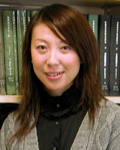2007
Jue Guo
- Doctoral Candidate
- University of Wisconsin-Madison

Abstract
This dissertation examines a set of bamboo slips discovered in a fourth-century BCE tomb at Baoshan in China in 1987, which record multiple occasions throughout a three-year period (318 BCE - 316 BCE), when the tomb occupant, Shao Tuo, used divination and sacrifice to address anxieties about his illness. The manuscripts show a picture of popular religious life that has been missing from the literature of fourth-century BCE China. The composite nature of the practices also directs attention to debates about magic, science, and religion that date back to the time of E. B. Tylor and Sir James Frazer. After describing the Baoshan manuscripts, they will be used as a case study to reconstruct the practices and interrogate the categories that anthropologists and theorists in religious studies often use to describe early societies. Combining textual interpretation with phenomenological and comparative approaches, the study argues for a more diverse picture of fourth-century BCE Chinese religion. The hybrid practices combining divination, sacrifice, prayer, and healing perform significant cultural, social, and psychological functions in the Baoshan context and argue against the evolutionary view that sequences early societies in an exclusive and hierarchical progression from magic, to religion, to science.

